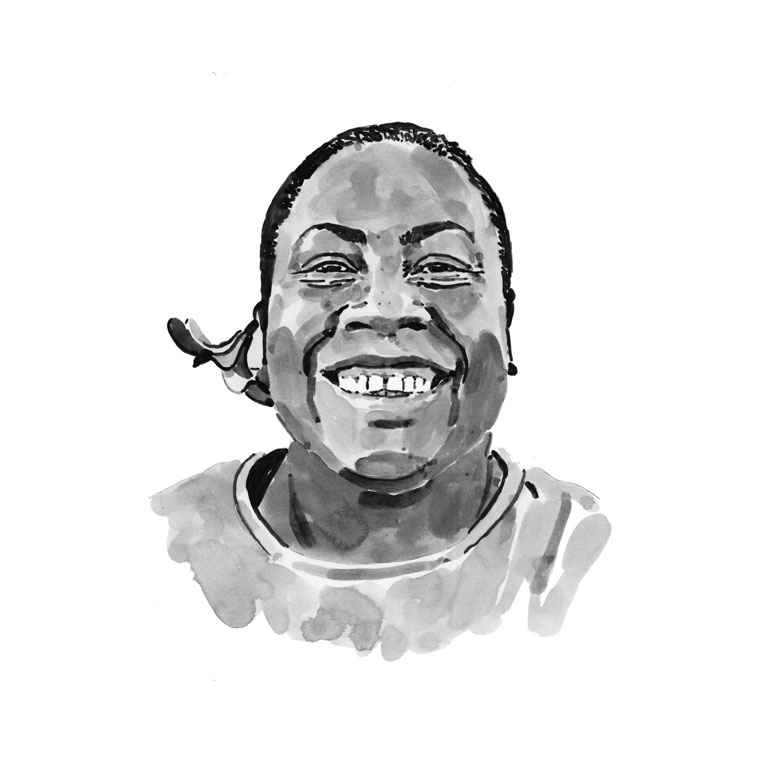Yolarnie Amepou

Who I am
I grew up near the sea, in a tropical town in Papua New Guinea, and snorkelling among the corals was one of my favourite activities. When I discovered that you could get a job involving the ocean and corals, I decided this was what I wanted to do. So I went to university to pursue a career as a marine biologist. After I graduated, my life went in a very different direction in that I travelled to the Kikori River, a large river in southern Papua New Guinea, to study a freshwater turtle in decline. I was offered a Master’s at the University of Canberra a year after first volunteering for the university-led Piku Project, which worked with local communities to protect and conserve a turtle that had declined by more than 50% in 30 years. I fell in love with the river, its biodiversity and the cultural diversity of the people. In 2017, I co-founded the Piku Biodiversity Network, a non-government organisation working for biodiversity conservation.
Today I manage the organisation’s operations and facilitate the work of our members, whose activities range from research to community environmental education and supporting community conservation initiatives. I first got involved with shark and rays in 2018, when members Dr William White and Dr Michael Grant needed help with sawfish research in the area. We documented and confirmed 41 shark and ray species in the Gulf of Papua, including four species of Critically Endangered sawfish, as well as 25 other sharks and rays on the IUCN’s Red List. This year we are researching the age and growth of Endangered winghead sharks in the Kikori Delta – and slowly but surely doing the best we can for the protection and conservation of sharks and rays in the Kikori Delta for Papua New Guinea and the world.
Where I work
I work in Papua New Guinea, which is the eastern half of the island of New Guinea. This is the largest island in the Pacific Ocean and even though it is large, it takes up less than 1% of the world’s surface area. It also accounts for almost 7% of global biodiversity, although a tenth of the species are still undocumented by science. This biodiversity has been used in many ways by the peoples of the island. My country is the most linguistically diverse nation on the planet, with 840 different languages coming from what we call ‘the land of a thousand tribes’. Our cultural diversity has a direct relationship with our environment.
I work along the Kikori River, which flows initially as two large rivers from the highlands into the Gulf of Papua in the south of the country. The river’s delta is a snapshot of the biological and cultural diversity of Papua New Guinea. We work with 10 tribes speaking different languages, each language and culture unique; 10 tribes in more than 50 villages, living in and managing different sections of the river. The Kikori begins as crystal-clear, fast-flowing rivers that gush through riparian rainforest and down into the largest expanse of mangrove forest in the country before finally meeting the islands, sea and waves of the Gulf of Papua. Many of our shark and ray species use this river–sea connection as part of their life history, including the sawfish, our two river sharks and the winghead shark, as well as the mighty bull shark.
What I do
My daily routine depends a lot on the projects we have running at the time, the tide and our Kikori community. I wake up at 5 am, check my e-mails and respond to any that require attention. At 7 am I have a quick breakfast and message Joyce about the day’s activities. She is responsible for managing the field work and will ensure that our small boat and its crew are ready. We check with the latest activities of the community before we set off on a three-hour boat trip along the Kikori to check on some of the 16 locally trained recorders who are monitoring wildlife. We are also training two rangers to take up various roles, but especially in community environmental education and to provide support for community conservation initiatives. They will be on the boat, along with any project officer tasked to deliver on-site project reports. In villages, the team will check on local monitors, collect and check completed data sheets, discuss any issues recorders are facing and provide new resources for monitoring. This is done while I speak to community leaders. It is important to keep in touch with them and understand their priorities to ensure that our projects contribute to their existing plans and that we have their cooperation.
We return to Kikori town at about 4 pm, which gives us enough time to go to the market. The Kikori market is a hub of activity: people coming from the river and delta communities to trade or travelling into the town to visit or work. I plan and schedule meetings here and receive and send a lot of messages. At around 6 pm I walk the limestone highway home for dinner and night e-mails – the end of another day in river life.
